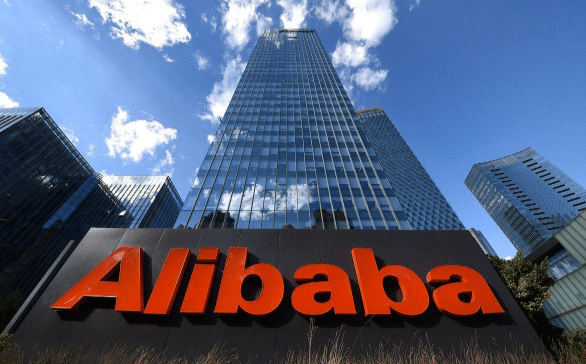As the National Day holiday ended, China’s central bank delivered a major liquidity boost that immediately steadied the A-share market. On October 9, the People’s Bank of China (PBoC) launched a ¥1.1 trillion (approx. $150 billion) buyout-style reverse repo operation, with a three-month (91-day) term.
This move not only fully rolled over the maturing ¥800 billion reverse repo, but also achieved a net injection of ¥300 billion into the market. Combined with the ¥300 billion nationwide consumption subsidy program and the China Securities Regulatory Commission’s (CSRC) approval for qualified foreign investors to participate in ETF options trading, the market is facing a triple policy boost. The key question: can A-shares break the 3900-point barrier and open a large-scale rally?
1. Central Bank Delivers a Heavy-Handed Liquidity Injection
Liquidity is the lifeblood of capital markets, and the PBoC’s operation has injected strong momentum. Unlike traditional tools, this time the bank adopted a “multi-level bidding mechanism”, directing funds more precisely to sectors in need and improving policy efficiency.
October is usually a liquidity crunch period, with ¥800 billion in 3-month repos and ¥500 billion in 6-month repos maturing, alongside seasonal cash demand and fiscal deposit pressures. By injecting extra liquidity, the PBoC dispelled market fears of a tightening environment.
Economist Wang Qing of Oriental Jincheng noted that large-scale government bond issuance, policy lending, and strong stock inflows pulling deposits could have tightened liquidity, but the PBoC’s intervention clearly signals a supportive monetary stance.
2. CSRC Expands Market Access for Foreign Investors
While the PBoC stabilized liquidity, the CSRC unveiled measures to further open China’s capital markets. Starting October 9, qualified foreign investors (QFIIs) are allowed to participate in on-exchange ETF options trading, primarily for hedging.
This follows previous reforms expanding QFIIs’ access to commodity futures and options. According to the CSRC, the goal is to enhance risk management tools for foreign institutions, boosting the stability of long-term foreign capital in A-shares.
At the same time, regulators announced that overseas institutions in the China bond market may now conduct bond repurchase agreements (repos). As of August 2025, 1,170 foreign institutions from 80 countries and regions held nearly ¥4 trillion in Chinese bonds. The new policy is expected to further increase the global appeal of renminbi assets.
3. ¥300 Billion Consumer Subsidy Program Fully Allocated
Beyond liquidity and market reforms, China is doubling down on consumption stimulus. The National Development and Reform Commission and the Ministry of Finance have disbursed the final ¥69 billion tranche of ultra-long-term special government bonds, bringing the annual ¥300 billion “trade-in” subsidy program to full delivery.
These subsidies target home appliances and automobiles, directly fueling consumer demand. Since consumption is the main engine of economic growth, this policy is set to strengthen domestic demand in the fourth quarter, supporting a broader recovery.
Combined with previous ¥500 billion policy lending tools and property market stabilization measures, momentum is building across consumption, finance, and real estate sectors.
4. October Market Outlook: Seasonal Tailwinds
Historically, A-shares exhibit a “calendar effect” after the National Day holiday. Between 2010–2024, the CSI All Share Index posted a median return of 2.27% in the five trading days after the holiday, with a win rate of 80%.
By the pre-holiday close, the Shanghai Composite rose 0.52% to 3,882.78 points, just shy of the recent high of 3,899.96. With both liquidity support and policy stimulus in place, the probability of a breakout above 3,900 has risen significantly.
Rotation across sectors is already visible: cyclical stocks are taking the lead from tech, consumer stocks are gathering strength, and financials are set for catch-up gains.
5. Three Sectors Poised for Breakout
- Tech Growth: While some AI hardware stocks corrected, memory chips and solid-state batteries remain strong. NAND flash prices have risen for six consecutive weeks, up 16.7% since late August. Domestic storage firms report October orders fully booked, with price hikes underway. Meanwhile, solid-state batteries are moving closer to commercialization—Tsinghua University’s lithium-manganese prototype has passed vehicle testing with an energy density of 604 Wh/kg and over 1,200 km range. CATL’s Chongqing plant has launched 5GWh capacity, with Q3 revenues up 120% YoY.
- Cyclical Resources: Backed by resource security policies and rate-cut cycles, metals like cobalt and copper are gaining traction. The DRC is imposing export restrictions on cobalt, affecting 15% of global supply, while Chinese EV demand keeps rising. Citigroup forecasts copper prices hitting $13,000/ton by 2026, supported by falling ore quality and power grid upgrades. Domestic copper producers already report 50% YoY profit growth in Q3.
- Financial Brokers: With valuations near historical lows (18x P/E, 40% percentile), securities firms are primed for a rebound. The ¥500 billion policy lending initiative will boost investment banking pipelines, with some firms seeing a 60% YoY increase in deal reserves. Meanwhile, Q3 average daily turnover hit ¥2.1 trillion, and margin financing balances reached ¥2.4 trillion, lifting brokerage earnings. Analysts project listed brokers’ profits up 44% YoY in the first three quarters.
Conclusion
October has historically been a bullish month for A-shares, and this year is no exception. With the PBoC’s ¥1.1 trillion liquidity injection, ¥300 billion in consumption subsidies, and expanded foreign investor access, the market is equipped with both policy and liquidity tailwinds.
Opportunities abound—but only for investors who recognize them. In this policy-rich environment, holding onto core sectors with strong fundamentals and policy backing may be the key to riding the next wave of growth.



